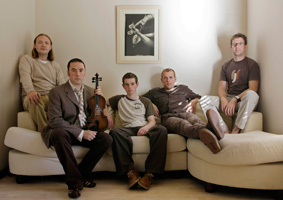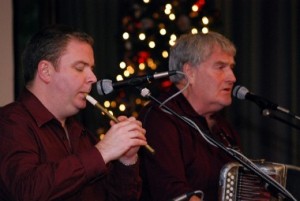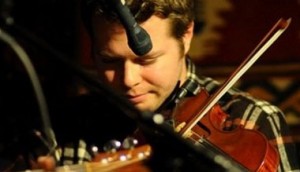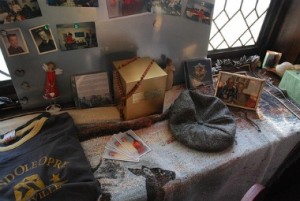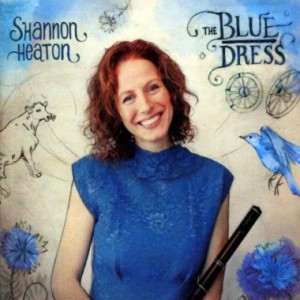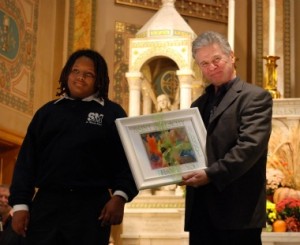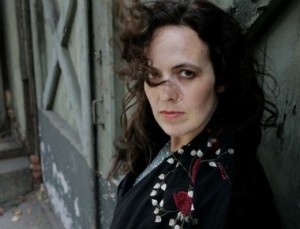
Irish singer-songwriter Susan McKeown
“Oh yes I am broken, But my limp is the best part of me.” ~ Welsh poet Gwyneth Lewis from “Angel of Depression”
Creativity and depression. Two states of being that often are inextricably etched in our collective minds when we think of artists and writers; the term “Byronic hero” immediately conjures up an image of the late great poet, brooding and melancholic, as he pens his immortal verse.
But for all that, there is still a stigma surrounding the topic of mental illness. Susan McKeown’s new CD, “Singing in the Dark” is bringing the subject into the light in a brilliant and innovative way.
It’s a project that has been nearly 10 years in the making; the Dublin-born Grammy Award-winning singer and songwriter has the gift of being able to work on multiple projects simultaneously while never losing sight of her creative goals.
“Seven years ago, my marriage had just ended, my father passed away, and my musical partner [Johnny Cunningham] died. What I do at times like those is to go to poetry, particularly early Irish poetry. I get so much solace from what the monks of that time wrote. And from what women poets have written,” McKeown explained to me over lunch in New York a few weeks ago.
“I originally had an idea for an album of dark songs, because listening to dark songs has helped me go into my own world … you get something from music like that.”
“And then one day I was hanging out with Natalie Merchant, our daughters were having a playdate,” McKeown laughed. “And we were talking about my idea, and a light bulb went off. An album like this would be the perfect place to explore darkness in very human terms, and the link between creativity and that darkness.”
“Depression, and manic depression, these are not something that people talk about. People are afraid to associate themselves with it, or speak about it. When I recognized this, I realized it was time to start singing about it.”
It was Merchant who introduced McKeown to the writing of Kay Redfield Jamison, whose book “Touched with Fire: Manic-Depressive Illness and The Artistic Temperament” became part of McKeown’s inspiration as she began work on her album.
Jamison herself became an important part of the project, and she writes in the introduction to “Singing in the Dark” of how McKeown “gives beautiful voice to those who have written of their suffering … has chosen the works of writers who describe their melancholy vividly, unforgettably.”
There are inclusions from the likes of Anne Sexton whose poem, “A Woman Like That” has been turned into a powerful anthem; Gwendolyn Brooks with the haunting lyrics “I shall not sing a May song, A May song should be gay, I’ll wait until November, And sing a song of gray” from “The Crazy Woman;” and Lord Byron himself appears with the melodic “So We’ll Go No More A-Roving.”
Because she’s never one to make things easy on herself, McKeown decided that her album would consist primarily, though not completely, of poems that had never been put to music before. And then she set about writing the music to five of those poems herself. I know because I counted them, and when I pointed this out to her, she seemed surprised and then laughed that she’d never consciously realized that.
“I’ve always written poetry, and music. When I was twelve, I entered a school contest and came in second with my song ’The Music Box;’ I was very influenced by Joni Mitchell.
“I think of music as poetry, so I start out writing them as poems. The challenge with writing the music for this CD was to find the music that each of the poems was looking for to make them singable. I just wrote as things would come; it’s completely subjective. What’s singable to me wouldn’t be for everyone … everyone has their own index.
“The music for James Clarence Mangan’s ‘The Nameless One,’ I woke up with the chorus in my head. When something comes like that, you feel like you’ve been given such a gift.”
The poems themselves were inspired from all sorts of different sources; researching the material was a huge part of the project.
“I got the idea for the poems from all kinds of places…’Good Old World Blues,’ I was given that one from a man I was on a second date with. There wasn’t a third date, but I got a really great song from it!”
The poem, “Mad Sweeney,” which was found as a manuscript in the 1670s, is believed to date back to the 10th century if not earlier, and McKeown received permission from Seamus Heaney to include his line ‘I need woods for consolation’ in the lyrics. But other than that, “the words are translated as they were originally written. It’s just human. And timeless. It could have been written about a homeless person today…and that’s what I wanted to get across.”
“I spent the last two years recording, we began in 2008 with John Dowland’s ‘In Darkness Let Me Dwell;’ this was always my favorite Dowland song. That one was recorded on Achill Island in Mayo with Steve Cooney. He had actually played Dowland’s music 20 years prior.”
With so much great material, and so many years of blood and sweat, how did McKeown know when it was complete? “When it’s hanging together well, and the glue is sticking, and the taste is good, then it’s done,” she laughed.
McKeown launched her CD at the end of October at Symphony Space in New York with an eleven piece backing band, following a daylong symposium at NYU’s Glucksman Ireland House. McKeown partnered with them to present the event, titled “Singing in the Dark: Irishness, Creativity, Madness.“
“I went to Ireland House because I have a relationship with them. It’s like drinking from a well … I’ve performed there many times. And it was such a great place to explore the topic in a scholarly fashion. Everyone who spoke there was so enthusiastic. I hope it’s just the first year; I would love to sponsor an annual festival to acknowledge our dark moods and how to use creativity to move out of them.”
Because there is no getting away from the link between Ireland and depression. Among the speakers were Patrick Tracey, author of “Stalking Irish Madness: Searching for the Roots of My Family’s Schizophrenia,” and Angela Bourke, who wrote “Maeve Brennan: Homesick at The New Yorker.”
And McKeown admits that, “yes, there are elements of what’s been going on in my own family … I discovered that there are three generations of men who all carried strains of manic depression, and interestingly, all three men married musical women.”
“People who are given these extra challenges as well as gifts are just trying to balance them, and learning that takes a lifetime … it’s how it is, there are high rates of creativity going along with depression. So I felt this is a wonderful way for me to speak out about it from the creative side.”
McKeown has begun touring for the CD, with dates scheduled in March 2011 for Germany, some in Ireland, and many more U.S. venues to be added in the next year. You can keep up with her plans on her Web site http://www.susanmckeown.com/live.html
Though she won’t be taking the 11-piece orchestra around the world with her, she has her trusted team traveling with her. “The two musicians that I’m taking on tour with me are Jason Sypher and Eamon O’Leary. I met them when I started going to a session that Eamon runs at The Brass Monkey in The West Village. It’s on Sunday nights from 5-8, and it’s great because I can bring my daughter there.”
The whole process has been one she’s cherished.
“This became something I had to accomplish in this life. It has been so satisfying to research it, so rewarding and such a pleasurable experience to record, and to do the tour … I’m just on a high. Because it’s got such meaning, and meaning for me is everything.
“I love all my albums, but this was something a bit different because it was a stretch and required a little effort.
“I like to explore and to challenge myself. I’m starting to look forward to challenges … I want to do something where people will say ‘Oh, that’s different!’ But in a pleasant way. These are songs that won’t be on your local jukebox, but that’s what makes it interesting.”

